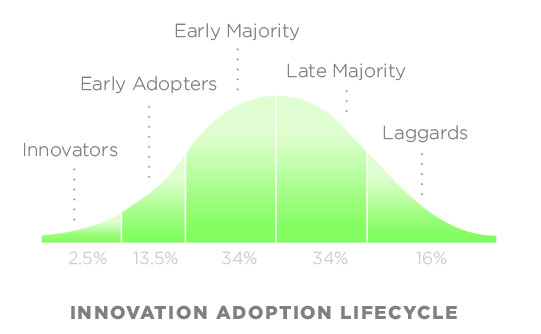 If you have the right market, touting your green credentials can be great for building your brand. But “green” can also be damaging. While companies selling green products love their environmental benefits, green isn’t always an asset when it comes to branding.
If you have the right market, touting your green credentials can be great for building your brand. But “green” can also be damaging. While companies selling green products love their environmental benefits, green isn’t always an asset when it comes to branding.
Psychographics
For example, off the top of your head: What percentage of Prius drivers would you expect to attend a NASCAR event? How about NASCAR fans attending an Earth Day event? You may have a product that benefits both groups, but generally it’s reasonable to assume that there is very little overlap between them. That extends to their affinity for environmental causes. This is where you need to be careful about your messaging.
“Green” has connotations which connote a mindset, set of motives, outlook, personal preferences, etc. If you’re into green tech and environmentalism, you’ll probably have a lot in common with other people that have green fever. The inverse is also true, and that’s where green marketing can be harmful to your brand. Some people don’t like green don’t want to associate with anything that’s environmentally friendly.
Whether you should use your green creds in your marketing depends on what your product is, where you are in the adoption curve, and your market penetration. If you have an existing mass-market brand, such as the Ford F350 pickup, you’re not going to want to start branding it with leaves and fluffy clouds to highlight increased full economy. Rather, you’d point out that you can go further, work harder, do more with less, etc. If you’re launching a niche vehicle such as the Nissan Leaf, you’d go with that green messaging. If you have a product specifically made to reduce pollution or environmental impact, your entire market may only comprise green consumers. It’s incredibly important to know that.

A graph of Everett Rogers Technology Adoption Lifecycle model. [Courtesy of Pnautilus via Wikipedia]
Green Benefits for the Masses
If you have a product with broad market appeal such as clean energy, you can appeal to a much larger market by downplaying the green aspects and highlighting other benefits such as economics and resiliency. Many solar and wind energy companies have already caught on to this. Whereas their original market was made up of early movers and progressives for environmental reasons, the economics have changed enough to attract economic buyers, many of which don’t associate with green messaging but appreciate the economics and resiliency of these energy sources. For some of these customers, it’s a negative to think of a purchase as a green move.
Fortunately for the green movement, there are more benefits than reduced environmental impact. Renewable energy typically has reduced maintenance and operational costs. Renewable energy is more resilient in the face of natural disaster. Clean fuels in transportation, such as electricity, natural gas and propane, cost less to drive mile-for-mile, but also have significantly reduced maintenance costs.
Green Marketing How-To
If you’re with a business that can capture the massive middle of the adoption curve, you’re in a sweet spot to fill your sales funnel. You can address those consumers with adjustments to your language and messaging. For example, the terms resilience and efficiency have become good, politically-neutral proxies for green, eco and environmentally friendly.
To avoid destroying your brand and help it reach its full potential, make sure you carefully consider your market and location on the adoption curve, segregate it into groups as necessary, and use terms and concepts that resonate with their motivations.